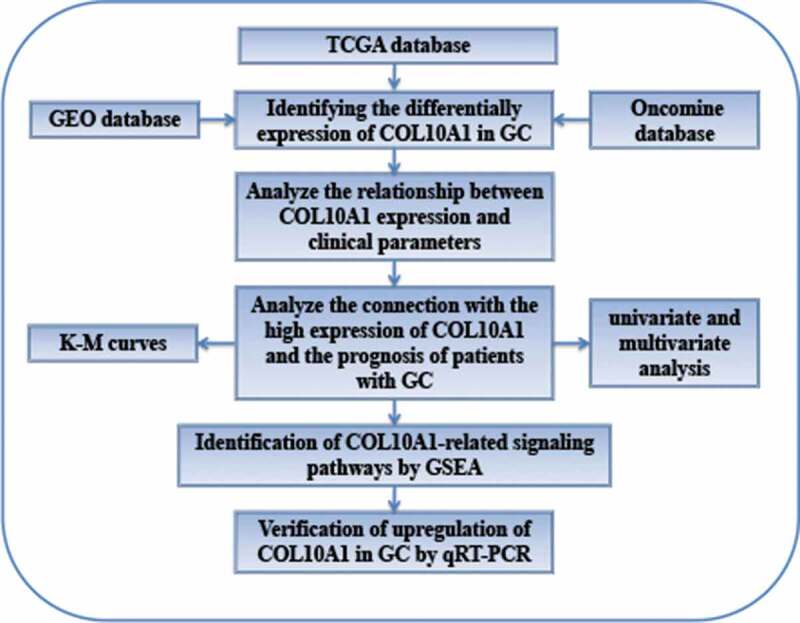- Record: found
- Abstract: found
- Article: found
Analysis of Collagen type X alpha 1 (COL10A1) expression and prognostic significance in gastric cancer based on bioinformatics

Read this article at
ABSTRACT
Collagen type X alpha 1 (COL10A1) is a member of the collagen family and the main matrix component. However, COL10A1 expression and prognosis relationship remains unclear in gastric cancer (GC). Through the analysis of database of Oncomine, the Cancer Genome Atlas (TCGA) as well as the Gene Expression Omnibus (GEO), in contrast to the tissue of normal gastric, COL10A1 in gastric cancer, had been upregulated. The high expression of COL10A1 was obviously related to T stage ( P = 0.025) and lymph node metastasis ( P = 0.025). It has been illustrated by the analysis of logistic regression that COL10A1’s heightened expression in gastric cancer had been essentially linked with pathological stage, tumor differentiation, and T classification. The Kaplan–Meier curve in the Kaplan-Meier plotter database ( P = 0.0371) and GSE84437 ( P = 0.002) indicate that patients with high COL10A1 expression possess poor prognosis, specifically GC patients with lymph node metastasis have it. TCGA’s Multivariate analysis ( P = 0.025) and GSE84437 dataset ( P = 0.034) show that high expression COL10A1 is a key independent predictor of poor overall survival. Searching KEGG pathway enrichment by GSEA, the results suggested that 29 pathways were enriched. qRT-PCR technique was used for verification of the COL10A1’s high expression in gastric cancer in contrast to the normal gastric tissues. In conclusion, COL10A1 is of great importance in predicting the survival rate of GC patients.
Graphical abstract
Related collections
Most cited references44
- Record: found
- Abstract: found
- Article: not found
Global Cancer Statistics 2018: GLOBOCAN Estimates of Incidence and Mortality Worldwide for 36 Cancers in 185 Countries
- Record: found
- Abstract: found
- Article: not found
Cancer incidence and mortality worldwide: sources, methods and major patterns in GLOBOCAN 2012.
- Record: found
- Abstract: found
- Article: not found
